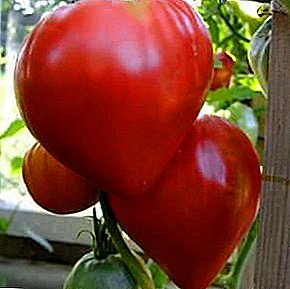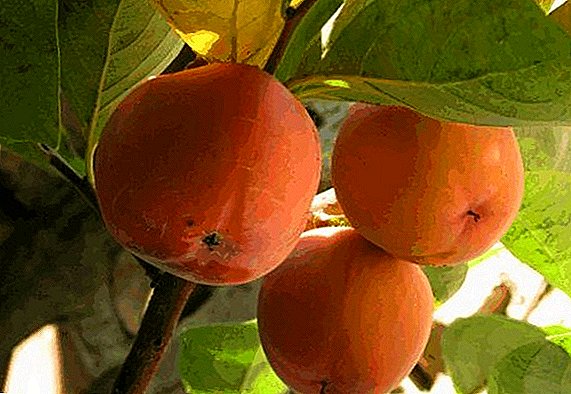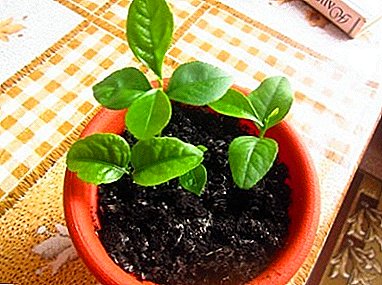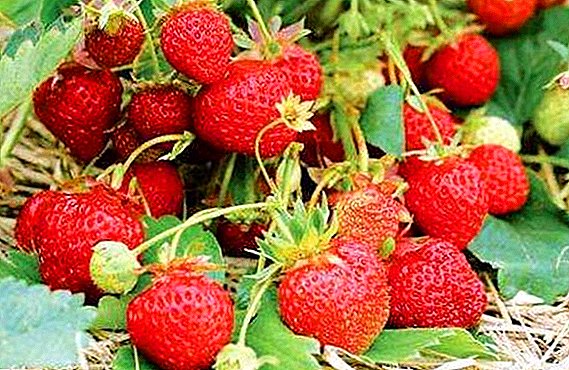
Tomatoes varieties "Cardinal" - a real classic of the world of the nightshade. Elegant raspberry-pink fruits have a bright and pleasant taste, suitable for salads, mashed potatoes, juices. Growing a variety is easy, it is only important to provide him with strong support and timely feeding.
You can get acquainted with this wonderful variety in more detail by reading its description in our article. We will also present to your attention the characteristics of tomatoes and the characteristics of cultivation.
Tomato "Cardinal": description of the variety
 Cardinal - medium early variety. Indeterminate shrub, grows in open ground up to 170 cm, in a greenhouse - up to 2 m. The plant builds up abundant green mass and requires the formation of 1 or 2 stems. In the brush ripens 8-10 tomatoes, heavy branches need tying. The fruits ripen gradually, throughout the season.
Cardinal - medium early variety. Indeterminate shrub, grows in open ground up to 170 cm, in a greenhouse - up to 2 m. The plant builds up abundant green mass and requires the formation of 1 or 2 stems. In the brush ripens 8-10 tomatoes, heavy branches need tying. The fruits ripen gradually, throughout the season.
Among the main advantages of the variety:
- very tasty, juicy and beautiful fruits;
- disease resistance;
- excellent seed germination;
- cold resistance;
- Tomatoes are suitable for salads and canning.
There are some minor flaws in the variety.:
- a tall bush needs to be shaped;
- you need to tie up not only the trunk, but also heavy branches with fruits;
- possible landing in the ground under the film, but in greenhouses, the yield is much higher.
Specifications
- Large tomatoes, weighing from 200 to 600 g On the lower branches tomatoes are larger.
- Tomatoes are rounded flat, slightly ribbed.
- In a state of technical ripeness, the tomatoes are light green, ripening, they acquire a rich pink-raspberry hue.
- The flesh is very juicy, with a bright sweet-sour taste and delicate aroma.
- Seed chambers are small, high content of sugars and trace elements makes tomatoes very nutritious.
- The dense, but not rigid peel guarantees safety of fruits.
Variety of salad, meaty and juicy tomatoes can be eaten raw, used for the preparation of appetizers, soups, side dishes and hot dishes. Ripe fruits make delicious juices, sauces and mashed potatoes. Canning is also possible, tomatoes are especially tasty in pickled form.
A photo
We offer to get acquainted with the variety of tomato "Cardinal" in the photo:


Features of growing
Seeds for seedlings are sown in the first half of March. Tomatoes prefer a light nutritious soil from a mixture of garden or sod land with old humus. For greater nutritional value, superphosphate and wood ash are added to the soil. Before sowing, seeds are soaked in a growth stimulator for 12 hours. Instead of industrial stimulants, you can use fresh aloe juice.
Seeds are sown in containers with a depth of 1.5-2 cm. If desired, the seeds can be planted in small peat pots (with a volume of 100-150 ml). Plants in individual containers do not require picks, they are planted in the ground directly in a peat container, thus avoiding injury to the roots. After sowing, the soil should be sprayed with warm water from a spray bottle, covered with plastic wrap and place the container in heat. For successful germination need a stable temperature of 25-26 degrees.
When sprouts appear on the ground surface, the containers are moved to a well-lit place. Young tomatoes love bright sunshine, on cloudy days will need powerful electric lamps. After unfolding the first leaves, the seedlings dive into small pots, watered and apply complex mineral fertilizer. Once again, seedlings fertilize before transplanting into the ground.
2 weeks before planting in a greenhouse or on a bed, young plants are hardened, bringing to the open air. The first walks last 20-30 minutes, after a week the seedlings can be left in the air for the whole day. Transplantation to a permanent place of residence takes place in early May (for greenhouses) or in early June (for open ground). Planted tomatoes in the first days is better to cover the film. In each well is placed 1 tbsp. a spoonful of complex mineral fertilizers or wood ash.
Immediately after planting, the tomatoes are tied to supports. The most convenient way to use the trellis is to attach not only the stems, but also heavy branches with fruits. Shrubs need shaping. The lower leaves and lateral processes are removed, leaving 1 or 2 stems. Too high plants are recommended to pinch the growth point. Watering adult tomatoes is moderate, using only warm soft water. 3-4 times per season, the bushes are fed with a full complex fertilizer.
Pests and diseases
 Grade Cardinal sufficiently resistant to viral and fungal diseases. However, other plants may be the culprits. To avoid problems will help the turnover of land. Tomatoes are planted in the beds, which are occupied by legumes, cabbage or carrots. It is not recommended to plant tomatoes in the places where they grew peppers, potatoes or eggplants. In a greenhouse, you need to change the top layer of the soil every season, spilling it with a solution of potassium permanganate or copper sulfate.
Grade Cardinal sufficiently resistant to viral and fungal diseases. However, other plants may be the culprits. To avoid problems will help the turnover of land. Tomatoes are planted in the beds, which are occupied by legumes, cabbage or carrots. It is not recommended to plant tomatoes in the places where they grew peppers, potatoes or eggplants. In a greenhouse, you need to change the top layer of the soil every season, spilling it with a solution of potassium permanganate or copper sulfate.
For the prevention of greenhouses and greenhouses need to often ventilate and destroy weeds in between rows. Soil mulching with peat, straw or humus also helps. Young plants are recommended to spray with phytosporin and pale pink solution of potassium permanganate.
In greenhouses and open fields, tomatoes can be affected by pests. The most common are aphid, bare slugs, thrips and whitefly. In hot summer, spider mites can attack seedlings and young plants. It is necessary to fight pests from the first days of plant life. The soil for seedlings calcined in the oven (at a temperature not lower than 60 degrees). This procedure effectively destroys the larvae in the ground.
At least once a week, seedlings and adult plants should be inspected, always looking under the leaves. Finding cobwebs or sticky drips, you need to wash them with a damp cloth, and then spray the plant with a weak solution of potassium permanganate. Regular spraying with warm water with the addition of liquid ammonia will help to destroy the slugs. You can get rid of aphids by washing away the pests with warm soapy water.
Insecticides help from spider mites, which are diluted according to the instructions on the package, and then treated by planting 2-3 times with an interval of several days. It is possible to spray tomatoes with chemicals before the beginning of the flowering period; during the fruit ripening, toxic products are prohibited.
"Cardinal" - An interesting variety suitable for greenhouses and greenhouses. Immunity to disease makes it suitable for novice gardeners. If desired, seeds for breeding can be collected from its own bushes, increasing the plantation without extra costs.












